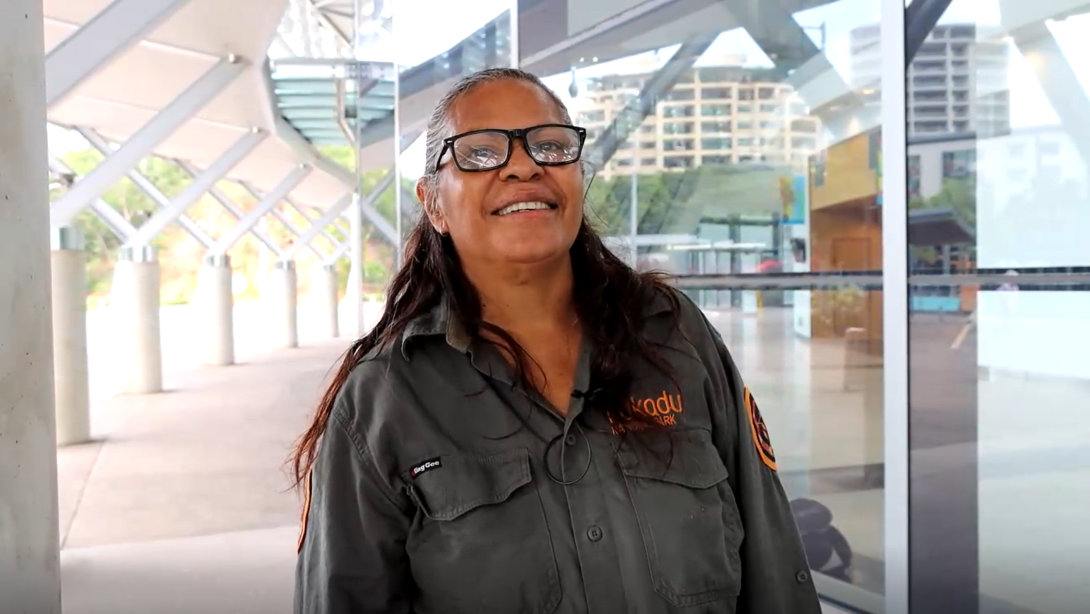Warning
Aboriginal and Torres Strait Islander readers are warned that the following article may contain images of deceased persons.
Many First Nations people are seeing first-hand the effects of climate change as well as increased weeds and feral animals on the land. As a result, they have observed a loss of habitat which is affecting the Indigenous way of life. That is certainly the case in Kakadu National Park in the Northern Territory, as described by Mandy Muir, a descendant of the Murumburr people and connected to the Wardaman people of the Katherine region.

Traditional knowledge of the land held by First Nations people is passed down through the generations. That sharing of knowledge is integral to the success of savanna fire burning, a practice that is undertaken in the park.
As the senior knowledge holder for Central Kakadu, Mandy understands the importance of controlled burning to rejuvenate and revitalise the landscape.
‘Given our perspective of the land, Indigenous people understand the intricacies relevant to fire burning processes so we know the impact fire will have on the ground.
‘Many of us are professors in our own right given the knowledge of the land that we hold. It’s a specialty instilled in us literally since we can walk. We get our children out on Country and that’s where fire practice takes place,’ Mandy said.
‘Applying traditional patchwork burning, small, controlled fires are lit on the savanna to clear pathways through the land, make hunting easier, create fire breaks and regenerate the vegetation at Kakadu.
‘Conducted between April and September each year, savanna fire burning starts soon after the wet season before the grass has completely dried out. Referred to as ‘cool burns’ these fires do not damage plants, seeds, or animals to any significant extent within the park and are self-extinguished overnight due to the cool moisture in the air at that time of year,’ Mandy said.
Under the Australian Carbon Credit Unit (ACCU) Scheme, landholders can register projects to earn ACCUs for reducing greenhouse gas emissions caused by late dry season, high-intensity savanna fires by introducing controlled burns consistent with the traditional Indigenous burning practices.
As of 7 April 2024, 81 projects have been registered under the ACCU Scheme’s savanna fire management methods attracting over 13 million ACCUs. This represents almost 10% of total ACCU issuances, making it the fourth largest method type under the ACCU Scheme by credit issuances.
ACCU Scheme savanna fire management projects have resulted in many benefits, including healthy fire management, fewer wildfires, and the protection of culturally significant sites.
Under the ACCU Scheme, savanna fire management projects are subject to strict requirements that must be met. You should consider the costs or risks associated with the activities conducted, the measurement of carbon abatement and the monitoring, record keeping and reporting requirements.